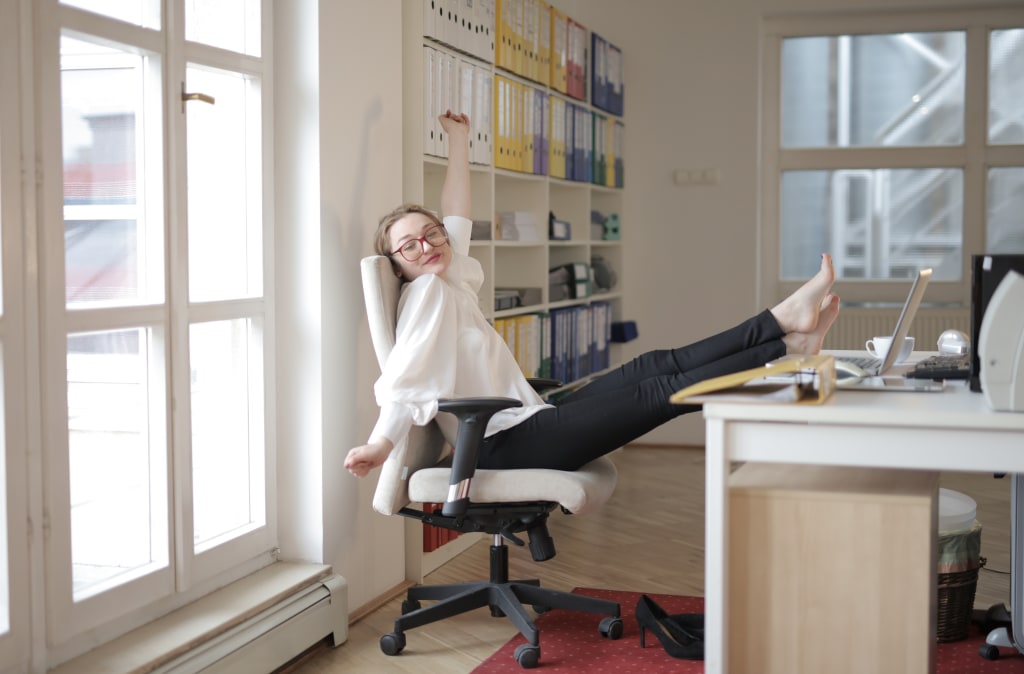Health and Wealth
Take breaks and stretch regularly if you have a sedentary job.

Taking breaks and stretching regularly is crucial for maintaining your well-being and reducing the negative effects of a sedentary job. Prolonged sitting and lack of movement can lead to various health issues, including muscle tension, poor posture, decreased circulation, and increased risk of chronic conditions. In this article, we will explore the importance of taking breaks and stretching during sedentary work and provide tips on how to incorporate them into your daily routine.
Sedentary jobs often require long hours of sitting, which can cause muscle stiffness and tension. Taking regular breaks throughout the day allows you to interrupt prolonged sitting and alleviate these issues. Breaks also help to refresh your mind and maintain focus, leading to increased productivity and job satisfaction.
Stretching during breaks is essential for maintaining flexibility, relieving muscle tension, and improving posture. It helps to counteract the negative effects of sitting by promoting blood circulation, reducing muscle imbalances, and preventing discomfort or pain associated with sedentary work.
To incorporate breaks and stretching into your sedentary job routine, consider the following tips:
Schedule regular breaks: Set reminders or use timer apps to prompt you to take breaks at regular intervals, such as every hour. Stand up, walk around, and engage in light physical activity during these breaks.
Perform desk exercises: Take advantage of your workspace by incorporating desk exercises into your breaks. Simple exercises like neck stretches, shoulder rolls, wrist and hand stretches, and leg extensions can help improve flexibility and relieve muscle tension.
Stand up and move: Stand up and move around whenever possible. Use opportunities like phone calls or reading documents to stand instead of sitting. Consider using a standing desk or an adjustable desk converter to alternate between sitting and standing throughout the day.
Stretch your muscles: Incorporate stretching exercises into your breaks to target specific muscle groups. Focus on areas such as the neck, shoulders, back, hips, and legs. Perform stretches like neck rolls, shoulder stretches, back extensions, hamstring stretches, and calf stretches.
Practice deep breathing and relaxation techniques: During breaks, take a moment to practice deep breathing and relaxation techniques. This helps reduce stress and tension in both the mind and body. Deep breathing exercises can be done at your desk or in a quiet space, helping to promote relaxation and focus.
Engage in short walks: Use your breaks to go for short walks. Take a stroll around the office, go outside for some fresh air, or find a nearby park or green space. Walking helps increase circulation, boost energy levels, and clear the mind.
Encourage workplace wellness initiatives: Advocate for workplace wellness initiatives that promote movement and physical activity during the workday. This can include standing or walking meetings, lunchtime fitness classes, or providing access to ergonomic furniture and exercise facilities.
Remember to listen to your body's signals and adjust your routine accordingly. If you experience any pain or discomfort, consult with a healthcare professional for guidance and support.
In conclusion, taking breaks and stretching regularly is essential for counteracting the negative effects of a sedentary job. By incorporating these practices into your routine, you can improve flexibility, relieve muscle tension, and enhance overall well-being. Prioritize your health by scheduling regular breaks, performing desk exercises, stretching muscles, and engaging in light physical activity. By taking care of your body and mind during sedentary work, you can promote a healthier and more productive work environment.
Taking regular breaks and incorporating stretching into your sedentary job routine is crucial. Prolonged sitting can lead to muscle tension, poor posture, and decreased circulation. Schedule regular breaks, perform desk exercises, and stretch your muscles to alleviate these issues. Stand up, move around, and engage in light physical activity during breaks. Practice deep breathing and relaxation techniques to reduce stress. Prioritizing breaks and stretching will improve your well-being and help counteract the negative effects of a sedentary job.
About the Creator
Enjoyed the story? Support the Creator.
Subscribe for free to receive all their stories in your feed. You could also pledge your support or give them a one-off tip, letting them know you appreciate their work.





Comments
There are no comments for this story
Be the first to respond and start the conversation.